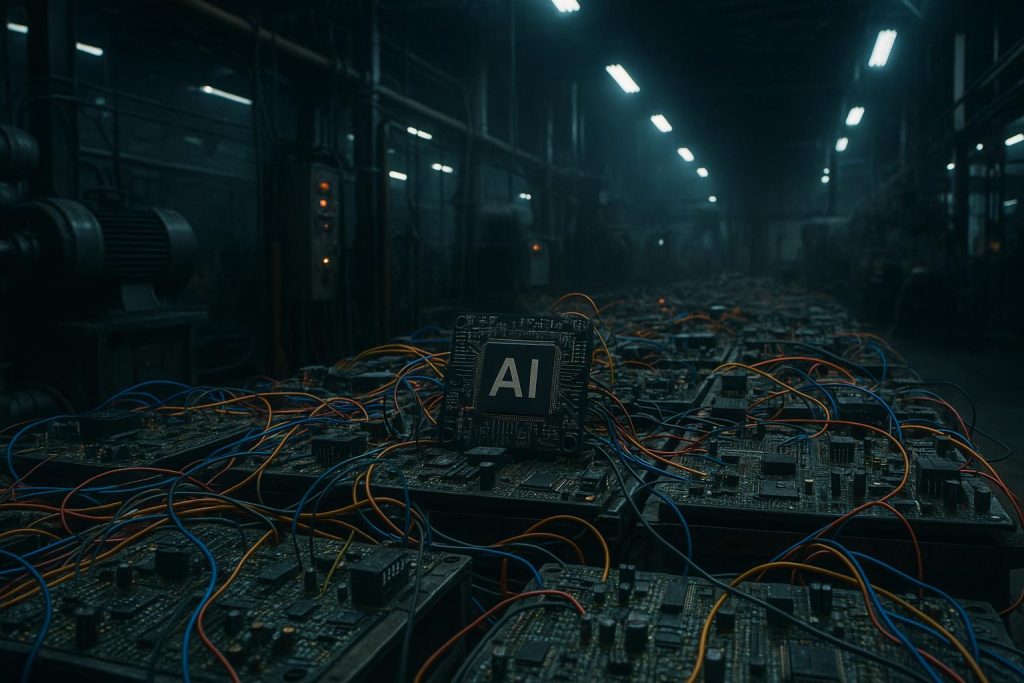Listen to the article
As AI continues its rapid integration across industries, a new ecosystem of specialised roles is emerging to oversee, govern, and optimise its deployment, reshaping organisational structures and risk management strategies.
The rise of artificial intelligence (AI) has not only transformed technological capabilities but has also catalysed the creation of numerous new roles across a broad spectrum of industries. These emerging positions span policy, product development, security, and operational functions, reflecting a growing demand for specialised expertise to manage the complexities and risks associated with AI integration.
One of the most prominent new roles is the Chief AI Officer (CAIO), a senior executive responsible for steering an organisation’s AI strategy, ensuring compliance, managing budgets, and leading governance initiatives. Public sector guidance has even mandated federal agencies to appoint CAIOs, prompting rapid adoption of the role within private companies. Effective CAIOs blend deep technical knowledge with leadership skills to set strategic priorities, fund promising projects, and curtail less viable ones. Their oversight encompasses AI governance frameworks designed to foster trust, optimise processes, and maintain control over AI applications, aligning AI initiatives with broader business goals and ethical standards.
Supporting governance and risk management, roles such as AI risk and governance leads have emerged to oversee AI safety, explainability, and auditing efforts. These professionals implement frameworks to map potential risks, assign ownership, and enforce accountability, effectively bridging policy, data science, and diplomatic communication. Simultaneously, AI security engineers tackle the expanded attack surfaces bred by AI systems, defending against vulnerabilities like prompt injection and data leaks with stringent security protocols carried over from application security disciplines.
In the quest to ensure model robustness and compliance, roles focused on testing and evaluation have become indispensable. Model red teamers, for instance, simulate attack scenarios and identify failure modes before deployment, ensuring AI outputs are safe and reliable. Concurrently, AI data security leads safeguard the integrity and confidentiality of training data, mitigating risks associated with data usage in model development. Legal dimensions have also prompted the creation of AI copyright and intellectual property analysts, who navigate evolving regulations around AI-generated content and advocate for clean data practices.
Addressing ethical concerns, algorithmic fairness auditors monitor AI systems to prevent bias, particularly in sensitive areas like hiring and credit lending. Independent AI model auditors provide third-party oversight, translating technical risk assessments into actionable business insights. Specialists such as retrieval engineers enhance the accuracy of AI-driven information systems by refining how chatbots access and cite relevant content from corporate databases.
On the operational side, prompt and instruction engineers optimise AI usability through precise directive design, while synthetic data engineers create surrogate datasets to facilitate training where real data is limited or sensitive, balancing innovation with privacy. The growth of vector databases to manage AI embeddings has given rise to dedicated administrators focused on performance and regulatory compliance.
Product managers specialising in AI systems play a crucial role by selecting use cases, setting operational guardrails, and measuring AI impact beyond simple usage metrics. Complementing this, AI UX writers and conversation designers enhance user interaction quality, tailoring tone and flow to ensure natural and safe communications. Localization and safety reviewers adapt AI models to diverse cultural contexts and legal requirements to prevent reputational damage.
Data privacy remains paramount, with AI privacy engineers implementing measures such as data minimisation, masking, and end-to-end flow mapping to protect sensitive information. Operational demands also extend to GPU cluster planners who optimise compute resources for cost-effective AI training and AI incident response leads who swiftly manage and remediate data leaks or harmful outputs.
Transparency and trust have accelerated the need for content provenance and disclosure leads, who oversee the ethical labelling of AI-generated content in line with federal guidelines. Workforce readiness is supported by AI enablement trainers providing accessible education on AI fundamentals, compliance, and best practices. Human-in-the-loop operations managers ensure seamless collaboration between AI systems and human reviewers, maintaining quality control and continually improving AI outputs through feedback loops.
Together, these emerging roles frame an intricate ecosystem where AI is not merely a tool but a transformative organisational asset requiring multifaceted oversight, technical acumen, and ethical stewardship. As AI adoption expands, companies are recognising that success hinges on building teams equipped to navigate the evolving technical, legal, and social landscapes of responsible AI deployment.
📌 Reference Map:
Source: Fuse Wire Services


